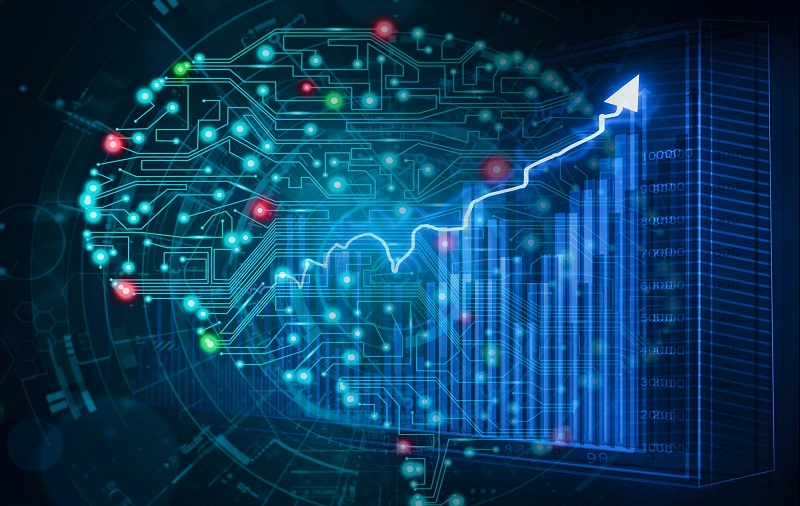The stock market, financial transactions, and stock exchange algorithms may seem mysterious to many people who do not know them well. They may even seem frightening to them, especially since financial exchange and transactions change in a mere second. One second can make the difference between a gain or a loss. The emergence of artificial intelligence and digital informatics has led to the creation of new techniques and methods in the financial markets through “trading with algorithms”.
Sometimes referred to as “automated trading” or “black-box trading,” it is a program capable of trading financial stocks at high speed making use of the latest developments in the markets. In a simplified way, trading algorithms are defined as an algorithm that executes orders and instructions related to pre-programmed financial trading operations based on data depending on time, price, and volume, and is an effective way that many professional investors make use of. In this article, we’ll go over how these algorithms work.
How Trading Software Works – Stock Exchange Algorithms
The simple basics of trading in a normal situation require the trader to be constantly aware and follow-up on large amounts of data. That is why trading by algorithms is an effective way to trade and invest. Where a programmer designs a program that carries out the buying and selling operations according to a set of specific conditions and instructions. The data will be monitored and updated constantly without the need for a trader to monitor it.
Basics of Trading with Stock Exchange Algorithms
Using trading algorithms, it is possible to ensure that transactions are executed and carried out in real-time and instantaneously. The algorithmic trader can check all market indicators and thus reduce the risks and potential errors compared to if it is a person with all his/her human errors.
Trading with algorithms can be applied on a small scale, but most of the trading with modern algorithms is done through the application of the so-called High-Frequency Trading: HFT, which is characterized by high speed and commercial applications. These are really popular with large investment firms but they are not really viable for small investors due to their high cost.
This technology has become one of the most common modern trading technologies and is used in the largest global stock exchanges, as it constitutes an incentive for companies to increase the liquidity of their shares and sell them more easily. For example, the New York Stock Exchange, which includes a group of companies that contribute to increasing competition and liquidity in their bids on the trading market between brokers and traders. The presence of liquid stocks allows investors more security and confidence because they are free to exit if needed in the future at any time. High liquidity allows for high-frequency trading, that is, more profits!
The real benefit of introducing HFT into the markets is that it contributes to raising the rates of supply and demand, which generates great profits for investors. These algorithms execute thousands of financial transactions and moves within minutes, the markets move even quicker with stocks rising and falling in value within seconds. For example, in May 2010 the value of the DOW Jones index fell about 10% (1,000 points) within 20 minutes.
We’ve just scratched the surface of stock exchange algorithms: it is a complex subset of machine learning, and it is growing quickly. If you want to learn more, we recommend reading this page: https://logicai.io/blog/applications-machine-learning-trading/.


